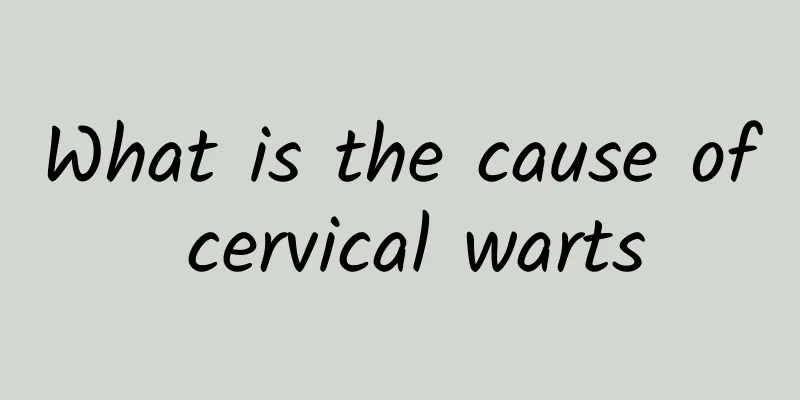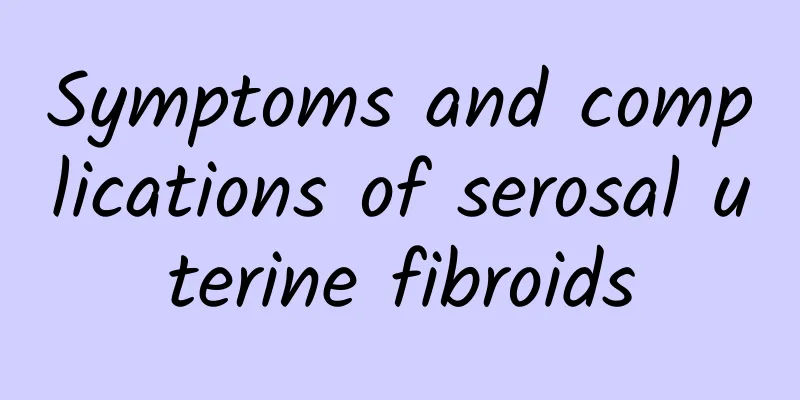How to treat cervical adhesion after abortion

|
Post-abortion cervical adhesions usually require physical separation, drug-assisted or surgical treatment. The specific treatment plan needs to be selected according to the degree of adhesion and the patient's specific situation. Timely medical diagnosis is the key to avoid further aggravation of adhesions and affecting reproductive function. 1. What is cervical adhesion? Endocervical adhesion refers to the formation of local scars on the inner wall of the cervical canal due to inflammation or tissue damage, resulting in adhesion or even complete occlusion. The main cause of endocervical adhesion is the stimulation or infection of the cervix caused by instrument operation after abortion. This condition may cause problems such as abnormal menstruation, amenorrhea or secondary infertility. In severe cases, it may also lead to intrauterine blood accumulation and chronic pelvic pain. 2. Treatment Methods (1) Physical separation: Patients with mild adhesions usually undergo physical separation, using dilator rods or hysteroscopic manipulation to carefully separate the adhesions. - Applicable situations: There is adhesion in part of the cervical canal but it is not completely occluded and there are no obvious signs of infection. -Surgical procedure: Usually only local anesthesia is required, and the uterus is carefully separated under direct vision without damaging healthy tissue. If necessary, a device to prevent re-adhesion, such as an intrauterine contraceptive device or a support ring, may be used. (2) Drug assistance: Drug therapy is mostly used in the recovery phase after adhesion separation, with the aim of preventing recurrence and promoting the repair of damaged tissue. - Commonly used drugs include: ① Antibiotics: to prevent postoperative infection, such as cephalosporins. ② Estrogen preparations: promote endometrial repair, such as estradiol benzoate tablets. ③ Topical medications: reduce inflammation and improve healing, such as hyaluronic acid gel. (3) Hysteroscopic surgery: Moderate to severe endocervical adhesions usually require treatment with the aid of delicate hysteroscopic manipulation, with precise separation performed under direct vision. -Advantages: less damage, quick recovery, and other possible related lesions in the uterine cavity can be observed at the same time. -Precautions: Anti-scar treatment should be taken after surgery, and anti-adhesion membrane or uterine dilation balloon should be placed for several weeks as needed to avoid postoperative adhesion. 3. Prevention and postoperative care (1) Maintain good postoperative care: After a miscarriage, you need to follow up on time to ensure normal tissue repair. Pay attention to private hygiene to prevent infection. (2) Dietary adjustment promotes recovery: -High-protein foods: such as fish, eggs, and lean meat, promote tissue repair. -Fruits rich in vitamin C: such as oranges and kiwis, which enhance immunity. (3) Avoid high-risk operations: Avoid resuming sexual life too early after a miscarriage to reduce further trauma to the cervix. Conclusion Post-abortion cervical adhesions need to be detected and treated early to avoid more serious complications or fertility problems. Regardless of the severity, it is key to go to a regular medical institution for a clear diagnosis in a timely manner. After treatment, you should insist on follow-up visits, cooperate with the doctor to take measures to prevent recurrence, and pay attention to other health signals of the body. |
<<: What is the cause of cervical cyst and cervical erosion? Do they need treatment?
>>: What medicine can eliminate right ovarian cyst?
Recommend
Don’t give up if you can’t lose weight: 3 tips to break the weight loss plateau
In the early stages of weight loss, weight usuall...
You exercise almost every day but your weight loss is stagnant? Experts share 5 tips to break through difficulties
You work out almost every day, but your clothing ...
How to treat chronic cervicitis in women with traditional Chinese medicine? Six effective Chinese medicine prescriptions are recommended for chronic cervicitis
Chronic cervicitis is the most common gynecologic...
How much do you know about the symptoms of uterine fibroids?
Among gynecological diseases, uterine fibroids ar...
What foods should women with dysmenorrhea stay away from?
Many female friends are troubled by dysmenorrhea....
Are uterine fibroids serious? How to care for uterine fibroids
Uterine fibroids are a benign tumor. Patients wit...
What will happen if women do not treat cervical erosion? Experts explain common knowledge about cervical erosion
Experts say that cervical erosion often occurs in...
What will happen if you don't see a doctor if you have vaginitis?
Vaginitis is a common reproductive tract infectio...
What are the complications of irregular menstruation?
What are the complications of irregular menstruat...
Common causes of adnexitis in women
Generally speaking, adnexitis is a common disease...
In what situations is the amount of bleeding most common?
Artificial abortion is the end of early pregnancy...
How do patients with cervical precancerous lesions choose to undergo relevant examinations?
Cervical cancer is a disease that seriously harms...
What are the diagnostic methods for vaginitis?
What are the diagnostic methods for vaginitis? Wh...
Learn more about the causes of recurrent vaginitis
Vaginitis is a common gynecological inflammation ...
What causes miscarriage?
What causes miscarriage? The causes of miscarriag...









